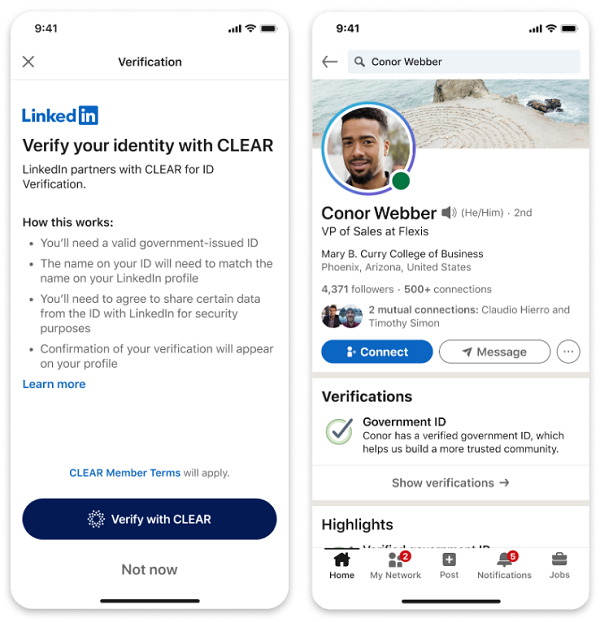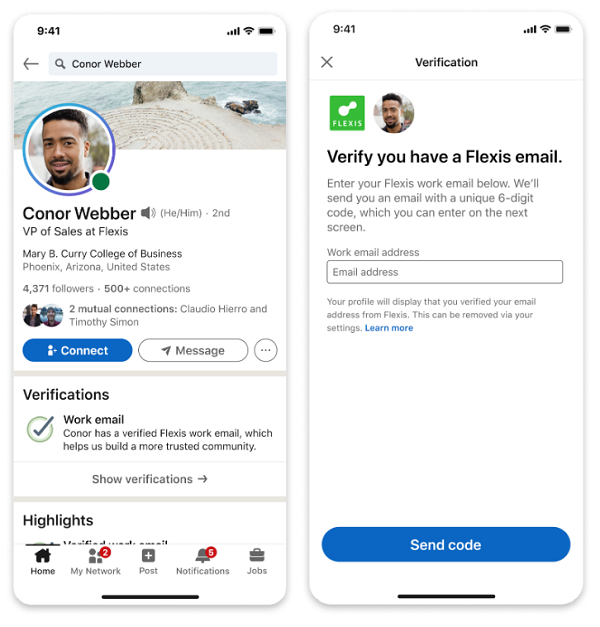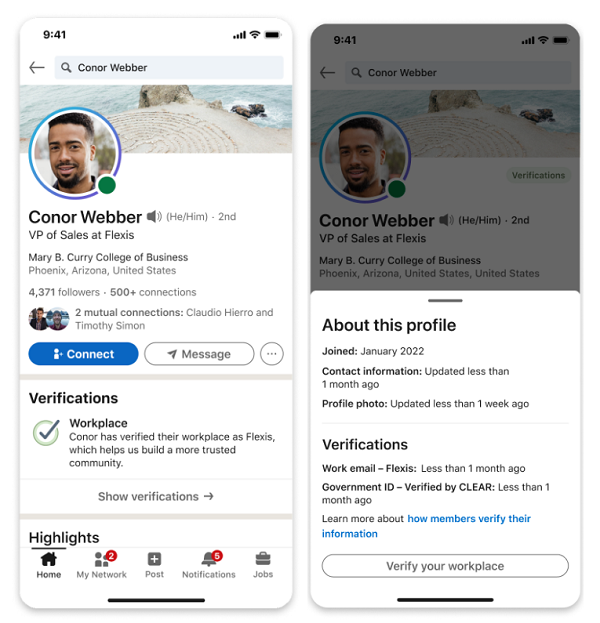Verification has become a key focus for social platforms, amid rising concerns around identity theft, along with increasingly realistic looking AI bots and bot profiles, which can dupe unsuspecting users.
And now, LinkedIn is also looking to add more identity features, providing more ways for people to prove that they are who they claim, including ID verification, workplace confirmation, and more.
First off, on ID verification – LinkedIn’s partnering with identity platform CLEAR to provide a new verification process, which will enable users to add a confirmation note to their profile by providing their Government-assigned ID.

As you can see in this example, by sharing your ID details with CLEAR, LinkedIn members in the US will be able to add a new Government ID verification qualifier to their profile display, which will provide more assurance to prospective partners and profile visitors.
LinkedIn’s also adding a new option that will enable employees of certain companies to verify that they do, in fact, work for that organization.
“Available now to 50 million members globally on LinkedIn, you can verify where you work using your company-issued email address. There are over 4,000 companies, and this is one more way to demonstrate the authenticity of your profile.”

This is a good update, because right now, anyone can claim that they work for any organization on LinkedIn.
Social Media Today, for example, apparently has 379 employees, according to LinkedIn, which would be amazing if true – but alas, I do not have hundreds of people helping to handle the site.
This new element will provide more assurance and confirmation on this element, which will help businesses ensure that they’re talking to actual representatives of an organization, and not just someone claiming to be a staffer.
Finally, LinkedIn will also enable organizations to issue digital workplace IDs via Microsoft Entra, providing another verification element.

LinkedIn says that this specific element could apply to over 2 million members, adding more assurance and validity to LinkedIn’s network.
It could be a valuable update – it’ll take time for LinkedIn to roll these verification tools out to all users, but eventually, it could help to better highlight bots and spam, and facilitate more trusted relationships via the platform.
And best of all, these new verification features are free. LinkedIn does, of course, charge for its LinkedIn Premium subscription offering, but unlike Twitter and Meta, it’s not looking to use subscriptions as a verification element, which will likely lead to expanded take-up of these markers.
LinkedIn says that its new identity features will be rolled out to US users first, before a broader expansion in future.



